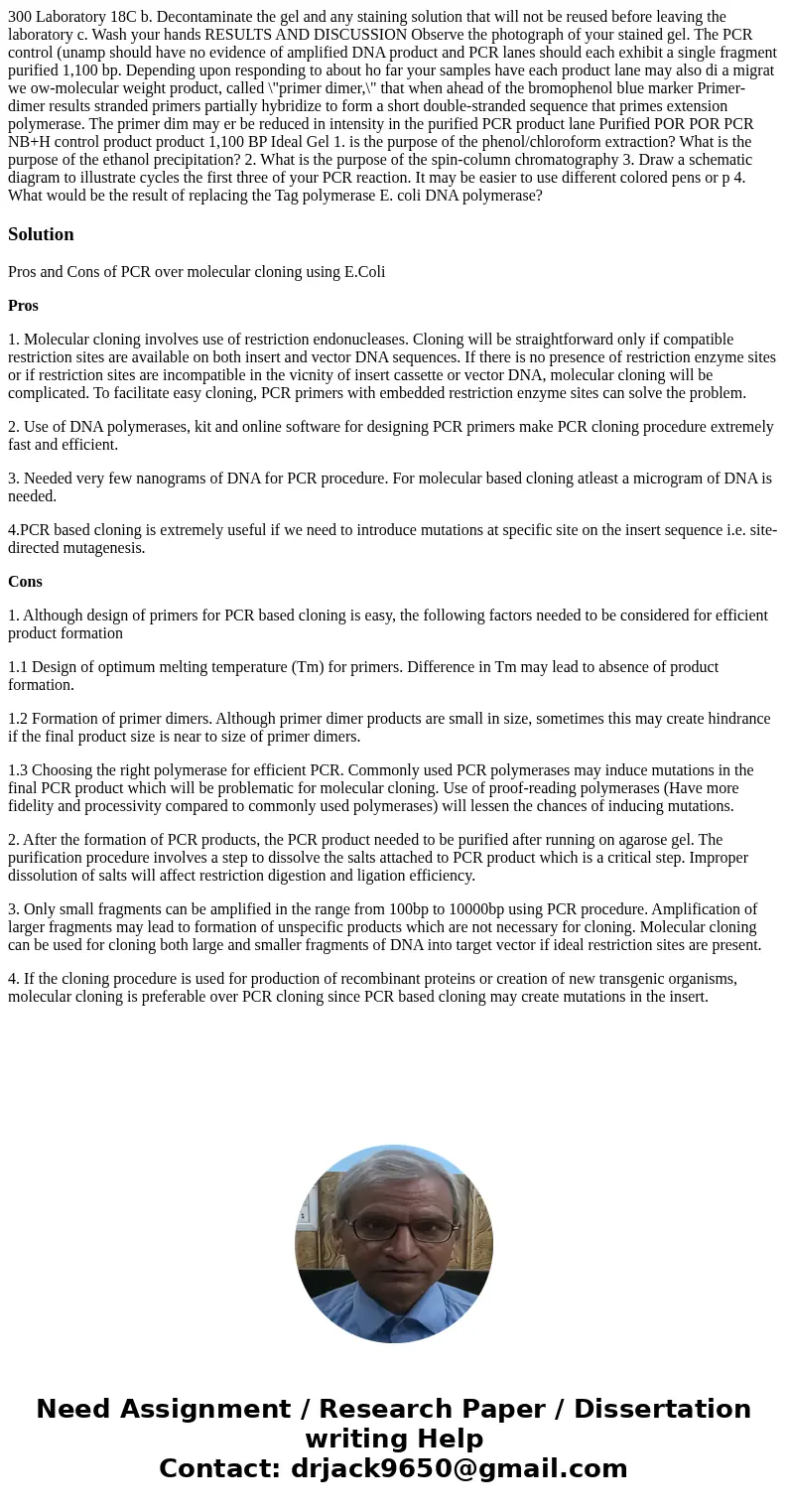300 Laboratory 18C b Decontaminate the gel and any staining
Solution
Pros and Cons of PCR over molecular cloning using E.Coli
Pros
1. Molecular cloning involves use of restriction endonucleases. Cloning will be straightforward only if compatible restriction sites are available on both insert and vector DNA sequences. If there is no presence of restriction enzyme sites or if restriction sites are incompatible in the vicnity of insert cassette or vector DNA, molecular cloning will be complicated. To facilitate easy cloning, PCR primers with embedded restriction enzyme sites can solve the problem.
2. Use of DNA polymerases, kit and online software for designing PCR primers make PCR cloning procedure extremely fast and efficient.
3. Needed very few nanograms of DNA for PCR procedure. For molecular based cloning atleast a microgram of DNA is needed.
4.PCR based cloning is extremely useful if we need to introduce mutations at specific site on the insert sequence i.e. site-directed mutagenesis.
Cons
1. Although design of primers for PCR based cloning is easy, the following factors needed to be considered for efficient product formation
1.1 Design of optimum melting temperature (Tm) for primers. Difference in Tm may lead to absence of product formation.
1.2 Formation of primer dimers. Although primer dimer products are small in size, sometimes this may create hindrance if the final product size is near to size of primer dimers.
1.3 Choosing the right polymerase for efficient PCR. Commonly used PCR polymerases may induce mutations in the final PCR product which will be problematic for molecular cloning. Use of proof-reading polymerases (Have more fidelity and processivity compared to commonly used polymerases) will lessen the chances of inducing mutations.
2. After the formation of PCR products, the PCR product needed to be purified after running on agarose gel. The purification procedure involves a step to dissolve the salts attached to PCR product which is a critical step. Improper dissolution of salts will affect restriction digestion and ligation efficiency.
3. Only small fragments can be amplified in the range from 100bp to 10000bp using PCR procedure. Amplification of larger fragments may lead to formation of unspecific products which are not necessary for cloning. Molecular cloning can be used for cloning both large and smaller fragments of DNA into target vector if ideal restriction sites are present.
4. If the cloning procedure is used for production of recombinant proteins or creation of new transgenic organisms, molecular cloning is preferable over PCR cloning since PCR based cloning may create mutations in the insert.

 Homework Sourse
Homework Sourse